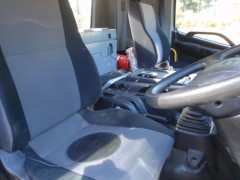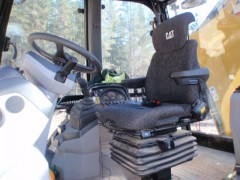Whole Body Vibration
What is Whole Body Vibration
Whole Body Vibration generally results from plant operators such as earth moving equipment, truck drivers, airplane & helicopter pilots, crane and train drivers and the like whereby their whole body oscillates up and down, side to side and/ or back to front, or a combination of these.
The common experience that most people can relate to whole body vibration is the effects of driving on a bumpy dirt road or the clickety clack of being bumped side to side in a train. Other sources of whole body vibration include the vibration of the engine and the activities being undertake such as digging or pushing dirt and soil.
What are the Potential Health Effects of Whole Body Vibration
The most significant risk of whole body vibration is musculo-skeletal injuries, primarily back pain. This is generally due to the muscle response to maintain posture for the average vibration measurements over longer periods of time. However jolts and jars can cause significant risk of injury from a single event.
Other risk factors include seating design and posture while sitting for extended periods of time as well as undertaken manual handling tasks that increase strain to back muscles. Other risks identified in the scientific literature include reproductive, digestive, circulatory and cardiovascular effects. Risks other than health also include discomfort and potentially decoupling the hand from the steering wheel or control levers which may induce an accident.
What is the Legislation Governing Whole Body Vibration
The NSW Work Health and Safety Regulation 2011 at Clause 60 require:
1) “A person conducting a business or undertaking must manage risks to health and safety relating to a musculoskeletal disorder associated with a hazardous manual task, in accordance with Part 3.1.”
2) In determining the control measures to implement under subclause (1), the person conducting the business or undertaking must have regard to all relevant matters that may contribute to a musculoskeletal disorder, including:
“(a) postures, movements, forces and vibration relating to the hazardous manual task, and
(b) the duration and frequency of the hazardous manual task……”
The WHS Regulation does not provide exposure limits similar to noise or chemical exposure; however the two most commonly referred standards in regards to whole body vibration are:
- ISO 2631-1:1997, Mechanical vibration and shock- Evaluation of human exposure to whole-body vibration and AS 2670 .1 Evaluation of human exposure to whole-body vibration. AS 2670.1 is essentially adopted from ISO 2631-1.
- The European Union Vibration Directive 2002/44/EC.
Both guidance documents quantify the vibrations measurements through the average root mean square acceleration values and the Vibration Dose Value (VDV).
How is Whole Body Vibration Measured
Safe Enviroments uses the top of the line Brüel & Kjær Human Vibration Analyzer Type 4447 to undertake whole body vibration measurements according to ISO 2631-1 Mechanical vibration and shock, Evaluation of human exposure to whole body vibration Part 1: General requirements.
Representative measurements are generally taken for between 10 – 40 minutes using a Type 4515-B-002 Seat Pad including Type 4524-B Accelerometer. The seat pad essentially sits one the seat whereby teh driver sits on top to measure the whole body vibration values. An additional accelerometer can be fixed underneath the seat to teh chasis to measure the attentuation provided by the seat.
Health Monitoring the Effects of Whole Body Vibration
It is recommended that all employees exposed to whole body vibration in the caution and likely health exposure zone be assessed which may include:
- Case history if the exposed worker including family history, work history, habits including smoking and drinking, medication and physical activities:
- Clinical examination by a qualified physician, preferably an occupational physician, including, back function examination and effects on pain of forward and lateral flexion and extension; peripheral neurological examination, signs of muscle weakness.
Where there is injury evident and is likely as a result of work activities, the worker and employer must be informed and action taken to review a risk assessment and implement suitable control measures to eliminate or minimise the risk.



